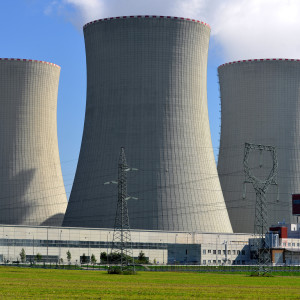It is argued that if the Titan submersible had been certified (read “peer-reviewed”), the deadly accident, which killed all five on board, wouldn’t have taken place. That may or may not be true.
Now there are calls for adventurism tourism to be regulated. I submit that if it is subject to regulation (read “licensing”), there will be very little of it — and it will be more expensive.
These days, there are calls to regulate everything from artificial intelligence to social media. Be warned: Whereas regulation does and should protect the public’s safety, it also has a dead hand. It curbs invention. It is comfortable with the known, not the unknown. Purely seeking safety sets up a timid regime.
You want inventions to be safe but also free to evolve. The dynamic of the undertaking is crucial.
Regulations can have a negative dynamic or a positive one. They both seek to protect the public’s health and safety but with differing results.
The Nuclear Regulatory Commission has the duty to regulate nuclear power and materials. It does this conscientiously but not progressively.
Evolution in nuclear power is very slow and difficult because of the NRC. Every wire, nut and bolt, pump and pipe in the nuclear steam supply system gets certified. And every change needs certification.
The result is that engineers design to pass NRC muster, not to reach into the great unknown of possibility or the soaring spirit of creative invention. The problem isn’t with the NRC staff but with its mandate.
Now, there is a resurgence of interest in nuclear power with small modular reactors, some using unproven but promising designs and technologies that haven’t been investigated since the 1960s, which was the end of the first wave of nuclear invention.
Some small modular reactors are being developed by U.S. companies in Canada and China so as to avoid initial NRC approval. Not that the promoters want to make an unsafe reactor but because if you are at the cutting edge of invention, it is hard to deal with the safety mandate that is the driving force in the NRC.
Originally, safety and promotion were both handled by the Atomic Energy Commission. That agency had promotion as its primary function but as it well understood that nuclear can be very dangerous, it also had a regulatory function. I covered the AEC as a reporter and, frankly, its regulation worked as well as what has succeeded it, namely the NRC.
The argument against the AEC reached a crescendo in the early 1970s, with relentless pressure from environmentalists and consumer groups, spearheaded by Ralph Nader, behind the slogan, “It’s its own policeman.”
But what the AEC had, which is now lacking, is a creative dynamic to develop new uses for nuclear, but safely. It worked: Experimental reactors were built and experimentation with everything from nuclear stimulation of natural gas reserves — basically nuclear fracking — to a variety of cutting-edge reactors at the Idaho and Oak Ridge national laboratories.
Contrast the stultification in nuclear with the progress in aviation where the Federal Aviation Administration promotes flying and regulates it, and certifies airplanes.
Of course, there have been mistakes and there are frequent accusations that the FAA is too close to Boeing and the airlines. The most egregious failure might have been in certifying the Boeing 737 Max without insisting on better pilot training on a tricky airplane. The result was two catastrophic crashes with non-U.S. airlines.
Yet, the skies are still safe. And they are filled with passenger and cargo aircraft that are evolving with each new technology coming along. When it comes to light aircraft, the FAA has been able to accommodate and find airworthy many new airplanes, from ultralights to aerobatic-certified engines and airframes, some from overseas.
These are exciting times for technology and the recreation it makes possible, and we shouldn’t regulate with the wrong dynamics.
Please follow DVJournal on social media: Twitter@DVJournal or Facebook.com/DelawareValleyJournal

